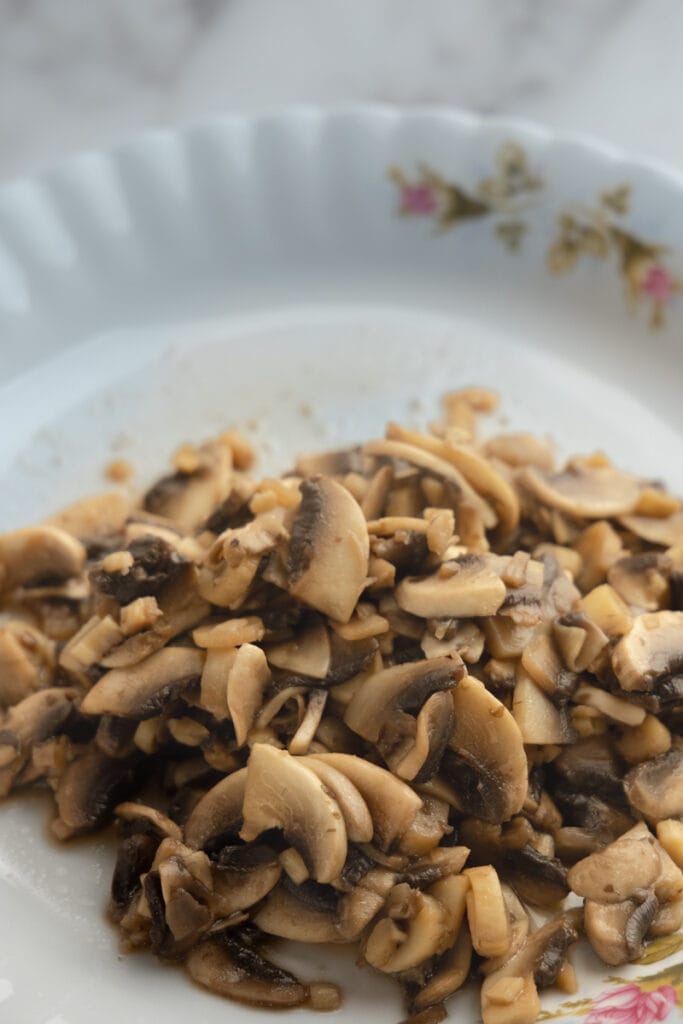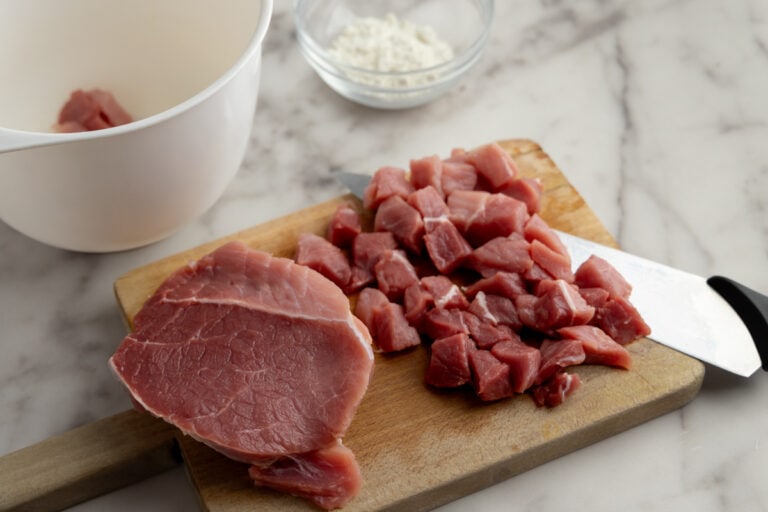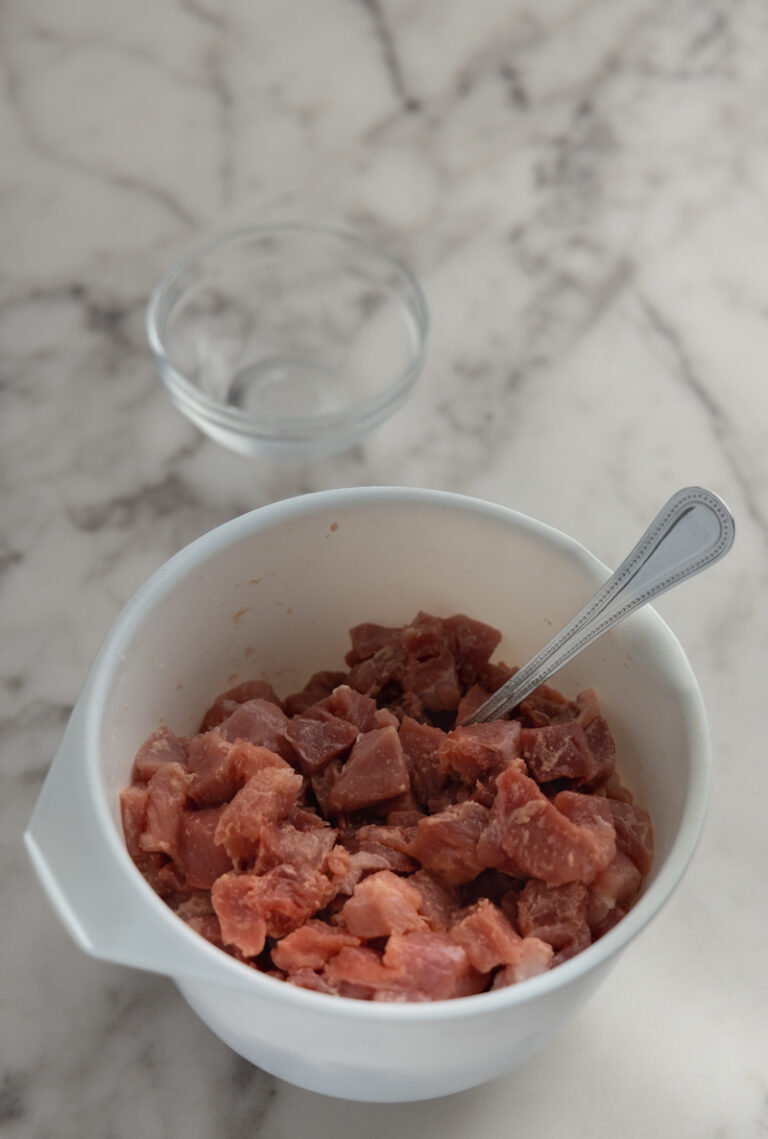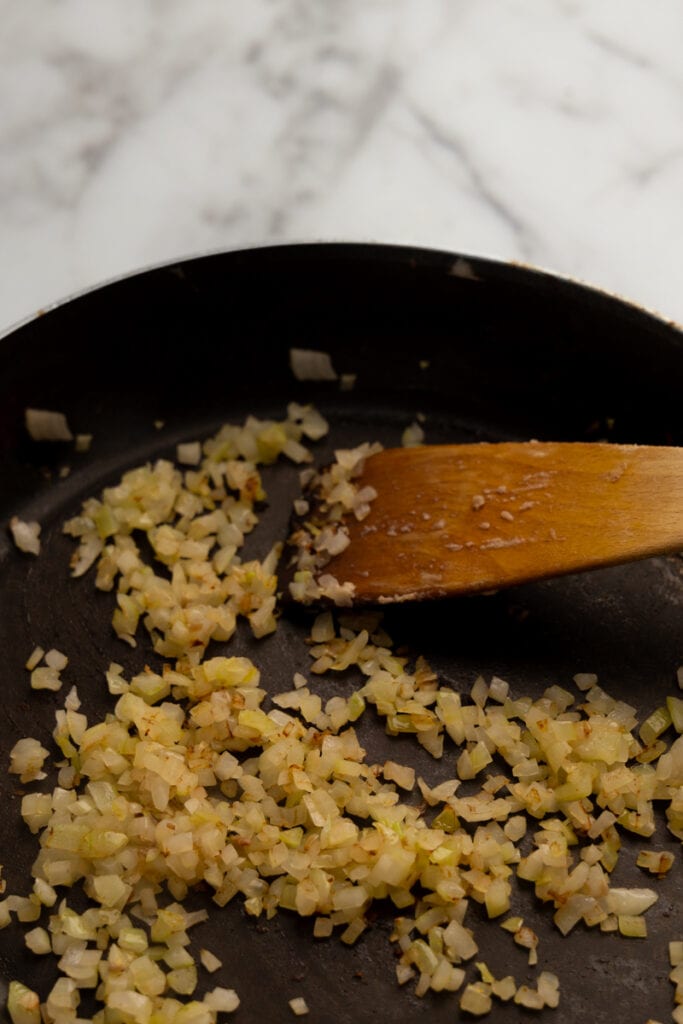Simple Polish Goulash
This post may contain affiliate links. Read our privacy policy.
Dive into the heart of Polish cuisine with this simple Polish goulash, a true comfort dish perfect for family dinners. Its versatility shines through as it pairs wonderfully with various potato sides. Don’t worry if pork shoulder isn’t available – feel free to use any stew meat or even chicken breasts for a lighter twist.

So, what gives this goulash its Polish identity? It’s the aromatic blend of allspice berries and bay leaves, a signature in Polish cooking, often used in broths and soups. Plus, we opt for pork over beef, mainly because it’s much cheaper.
Let’s get cooking!
Recipe At a Glance
- Versatile Main Dish: This hearty Polish goulash pairs wonderfully with various sides, particularly potatoes and grains, making it a versatile option for any meal.
- Flexible with Meat Choices: While traditionally made with pork shoulder, this goulash recipe is adaptable to any stew meat you have on hand, including beef or chicken, without altering the core flavors.
- Convenient for Large Batches: The recipe is easily scalable, making it perfect for preparing in large quantities. It’s an ideal make-ahead meal as the goulash freezes well, ensuring you have a delicious option ready for future meals.
If you’re making Simple Polish Goulash for the first time, read the ingredients notes, step-by-step instructions, and tips. If you’re a veteran, feel free to jump to the recipe card.
Ingredients Notes and Substitutes
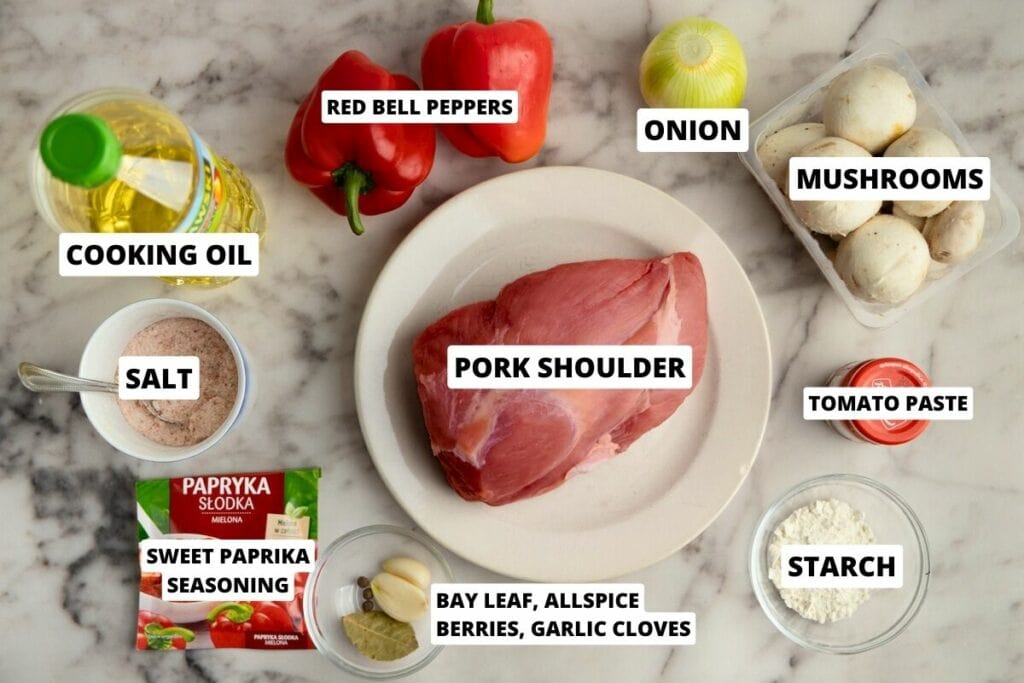
- Pork shoulder. We traditionally use pork shoulder for this goulash, but many other meat options work well. Read the variations section for more info.
- Button mushrooms. Portobellos or creminis should work, too.
- Bell peppers. I typically use red bell peppers, but other colors work just as well.
- Onion. Regular yellow onions are preferred, but red onions or shallots will work, too.
- Garlic cloves.
- Bay leaf.
- Allspice berries. If you only have ground allspice, you can replace 6 allspice berries with 1/2 teaspoon ground allspice. That means you need about 1/4 teaspoon of ground allspice if you make a single portion of this recipe.
- Sweet paprika seasoning.
- Tomato paste.
- Salt.
- Oil. Any cooking oil will do.
- Water or broth. Broth makes the flavor even better, but the goulash turns out fine even if you use water.
- Starch. Either corn starch or potato starch works. We use starch for thickening the goulash, which means you can substitute it with white flour or simply cook the meat for longer to reduce excess water.
- (Optional) Flour. We use a bit of flour to coat the meat before browning it in a skillet.
(Bay leaf and allspice berries combo got you curious? It’s a Polish classic that we also use in soups, for instance, this Polish pickle soup.)
How to Make Simple Polish Goulash
- Prep mushrooms. Begin by washing or cleaning the mushrooms, then peel and slice them.
- Cook mushrooms. Heat a tablespoon of cooking oil in a non-stick pan and add the sliced mushrooms. Cook them (without adding salt) for a few minutes until most of the water has evaporated and they have reduced in volume. Transfer the mushrooms to a plate and set them aside. We cook the mushrooms first because if we do that after cooking the meat, they tend to burn.
 Sliced mushrooms
Sliced mushrooms Fried mushroom slices
Fried mushroom slices
- Prep meat. Cut the pork shoulder into coarse cubes, cutting away excess fat.
- (Optional) Coat meat. Sprinkle the cubed pork with half a tablespoon of flour, mix well, then add another half tablespoon of flour, and mix well. This coating helps with browning the meat, but it’s by no means necessary.
 Pork meat sliced into cubes
Pork meat sliced into cubes Cubed pork sprinkled with 1 ½ tbs of flour
Cubed pork sprinkled with 1 ½ tbs of flour
- Cook meat. In the same pan used for the mushrooms, fry the floured pork over high heat for a few minutes to brown them. If the heat is too low, the meat is wet, or you overcrowd the pan, the meat will release water instead of browning. If that happens, proceed to the next step. No browning means slightly less flavor, but it doesn’t break the dish by any means.
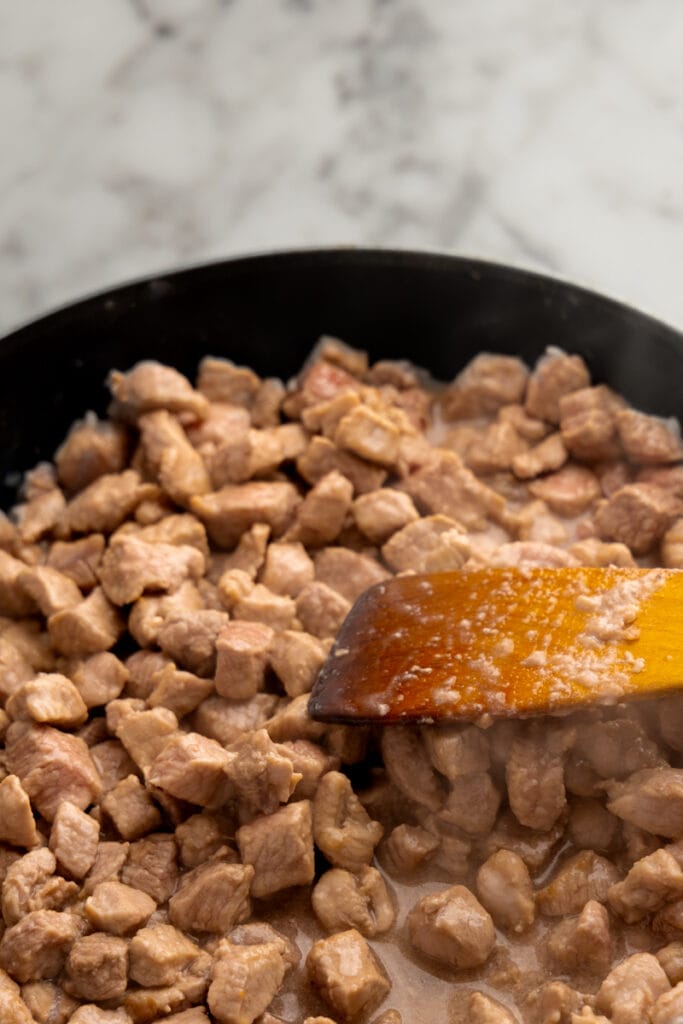
- Start cooking. Put a large pot over medium heat, transfer the browned pork into it, and pour boiling water or hot broth over the pork, just enough to cover the meat plus a tiny bit extra. If using water, add about 1/4 teaspoon of salt per pound of meat and stir. If using broth that’s salty, skip the salt. Lower the heat when it starts to boil.
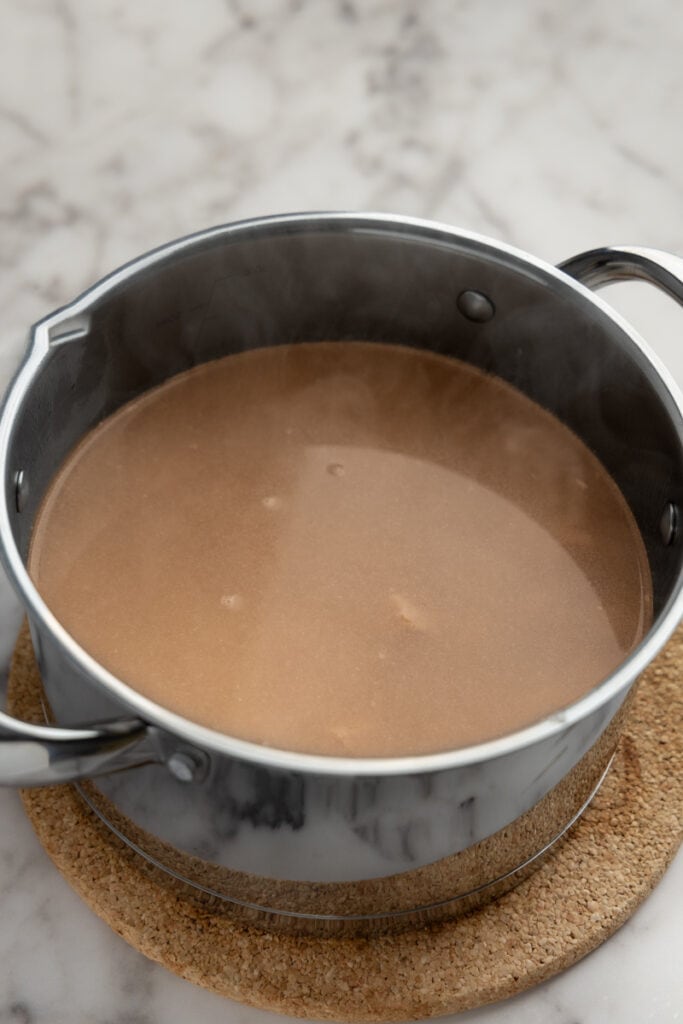
- (Optional) Skim. Once the water comes to a boil, skim off any foam or impurities that rise to the surface with a spoon. These typically look gross, so feel free to remove them.
- Prep onion. Wash and dice the onion, then fry it in a small amount of oil until golden brown, typically for 5 to 8 minutes. Add the cooked onion to the boiling meat.
 Minced onions
Minced onions Sauteed onions
Sauteed onions
- Add ingredients. To the pot, add the allspice berries, bay leaf, crushed garlic cloves, and the previously set-aside fried mushrooms. Stir to combine.
- Add the bell pepper. Wash the bell pepper, cut it into medium-sized cubes or half strips (cut the pepper into strips, then halve them), and add to the pot. Stir again.
- Add sweet paprika and tomato paste. As soon as the broth begins to boil again, add the sweet paprika powder and tomato paste to the pot and mix well.
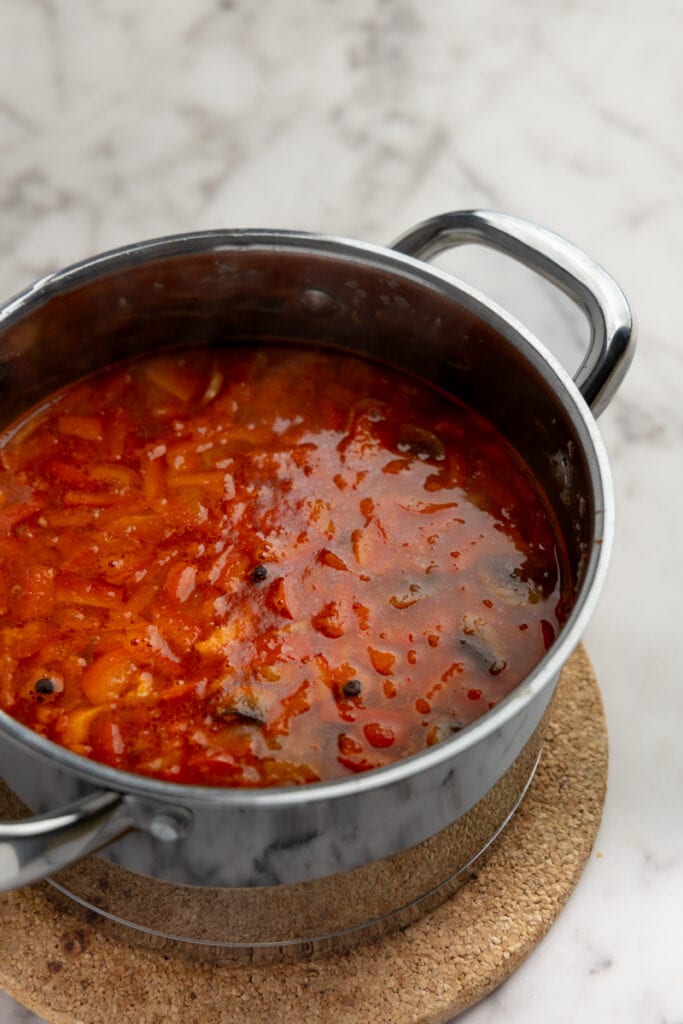
- Cook. Cover the pot with a lid and let everything cook for about 1 to 1.5 hours. Try to stir it every 15-20 minutes to prevent the meat from sticking to the bottom.
- Taste check. After an hour of cooking, taste the sauce and adjust the seasoning with salt (if it lacks flavor) and tomato paste (if it lacks acidity). The sauce can be slightly saltier than preferred, as the meat will absorb some of it. Continue cooking until the meat is tender, typically for another 10 to 30 minutes, depending on the size of the meat cubes.
- Adjust consistency. Once the meat is tender, check the consistency of the goulash. If the thickness is okay, you can turn off the heat. If it’s too watery, you can either remove the lid and let it simmer for another 15-20 minutes to reduce it or use a starch slurry. To make one, mix 1 tablespoon of starch (corn or potato) with 2 tablespoons of cold water and stir it into the sauce. If the sauce still isn’t thick enough, repeat.
- Remove allspice berries and bay leaves. You want to remove the allspice berries and bay leaves from the goulash before serving it. You can do the fishing right after taking the goulash off the heat or before serving it. Or leave it to the eaters.
- Serve.
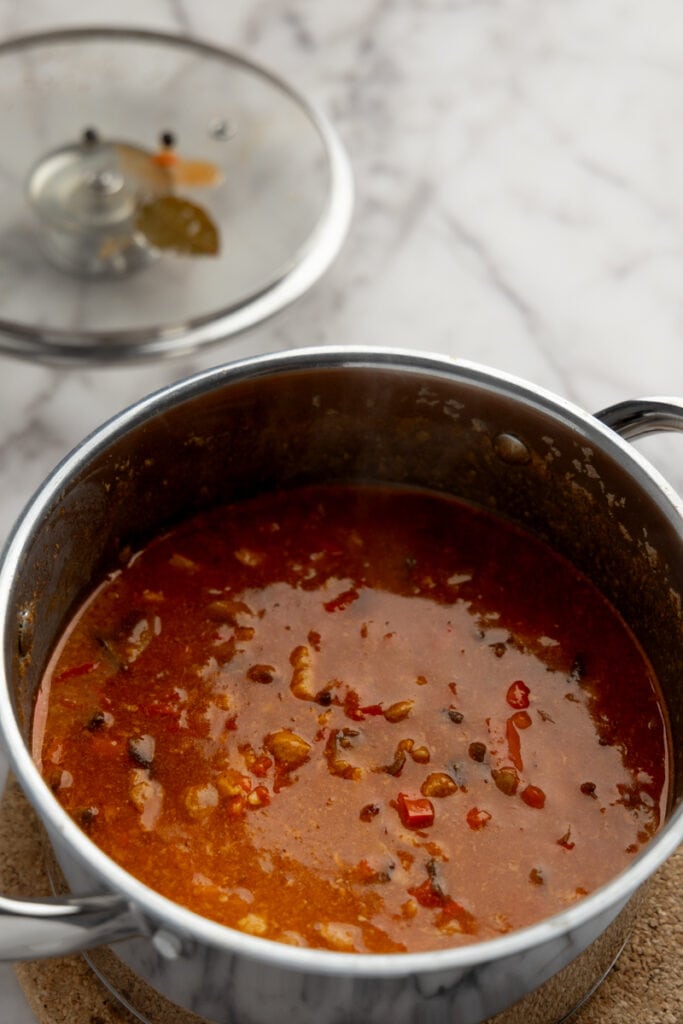
Tips for Making Simple Polish Goulash
- Consider a larger batch. Making goulash is time-consuming, so to save time, consider doubling the recipe. The cleanup and cooking time remain the same, but you’ll only need to spend an extra 15 to 20 minutes cutting up all the ingredients. You can then freeze the leftovers for later.
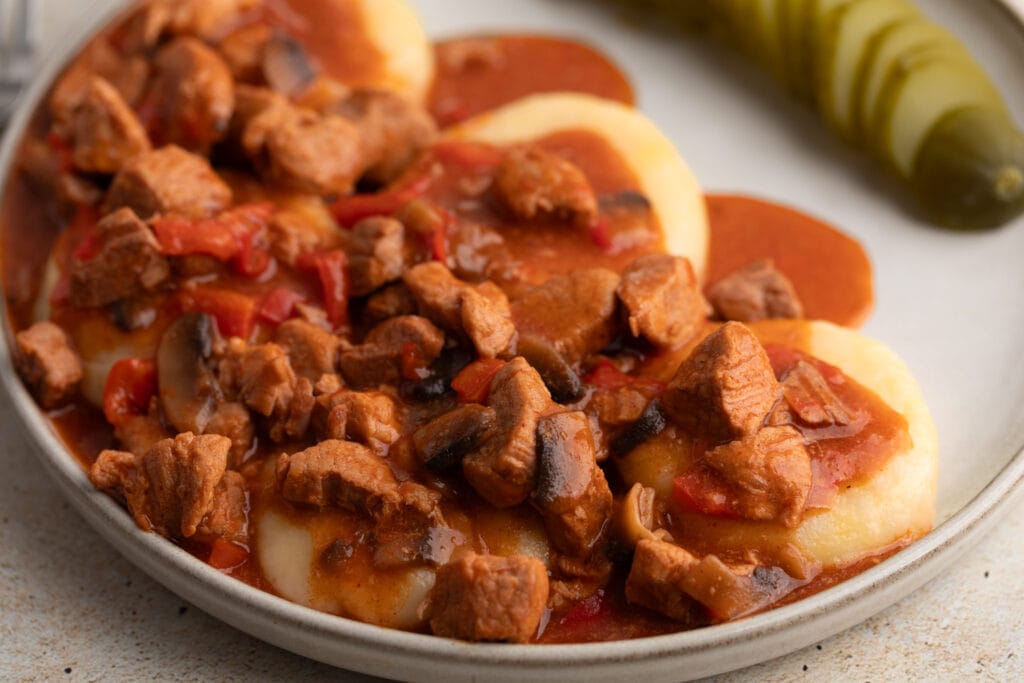
Variations
While this goulash recipe suggests using pork shoulder (a typical choice in Poland), the dish is versatile, and you can use various types of meats without changing anything else. Here are a couple of options worth trying out:
- Pork Loin. Leaner than pork shoulder, pork loin is a good choice if you prefer meat with less fat. It tends to cook faster than pork shoulder, so it’ll probably be nice and tender after 50 to 60 minutes of cooking.
- Beef. Beef makes for a rich, robust goulash. Suitable cuts include chuck roast, brisket, or beef labeled “stew meat.”
- Chicken. For a lighter version of goulash, chicken is a great alternative. Chicken thighs are best because they remain juicy after slow cooking, but you can also use chicken breasts. Remember that chicken cooks faster than pork and beef, so the meat should be tender and ready after about an hour or so.
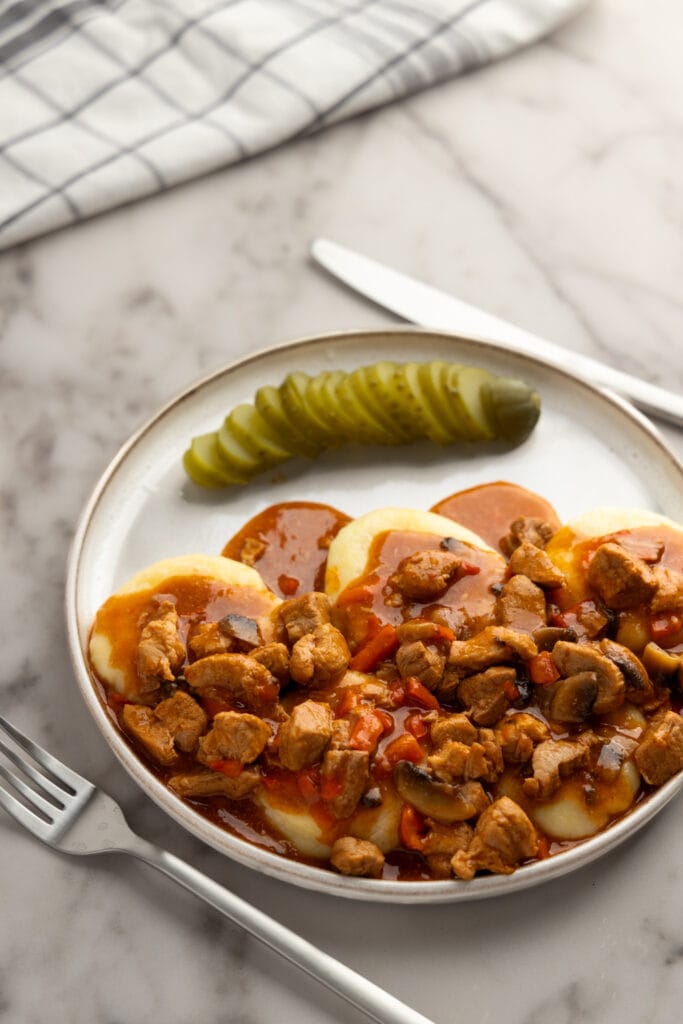
Serving Options
In Poland, we typically pair goulash with potatoes or grains. Here are some classic pairings:
- Potatoes. Boiled or mashed potatoes are simple yet perfect pairings for goulash.
- Polish Potato Dumplings. For a fancier option, you can boil the potatoes and turn them into dumplings, similar to Italian gnocchi.
- Silesian Dumplings. Popular in the Silesia region and throughout Poland, these dumplings offer another interesting way to enjoy cooked potatoes.
- Rice. A bed of fluffy cooked rice makes an excellent base for goulash, absorbing the flavors and adding a different texture.
- Pasta. While not a typical pairing in Poland, it works just as well as the other options. Try egg noodles, pappardelle, penne, rigatoni, or any other shape that holds onto the sauce.
To make it a complete meal, add a salad on the side. Some Polish classics include:
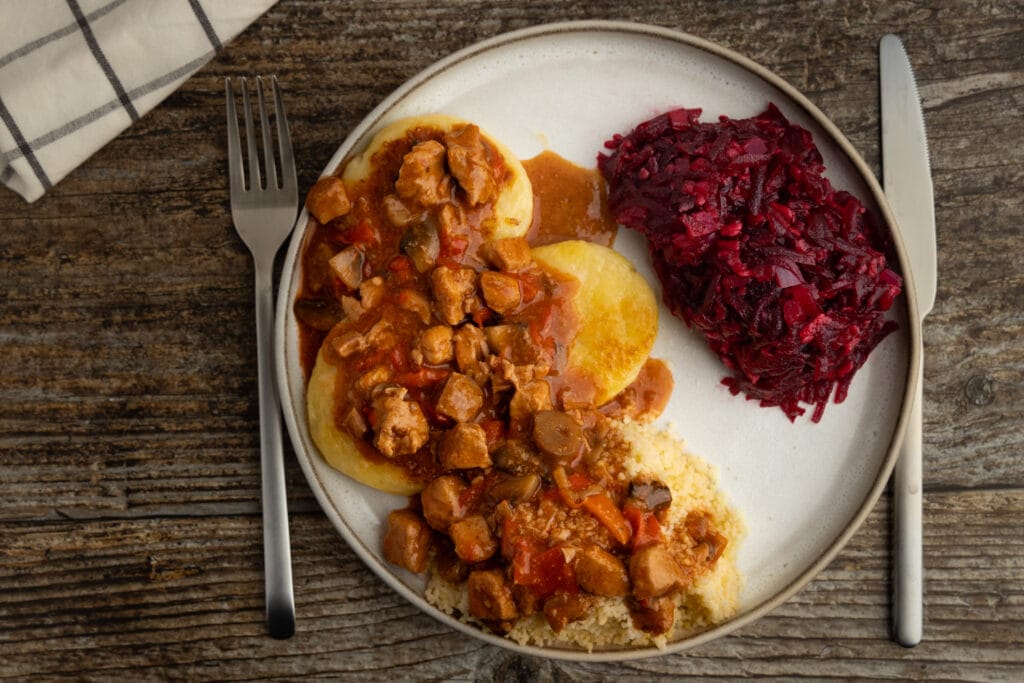
Storage
Here’s how to store the goulash:
- Cool at Room Temperature: After cooking, leave the pot uncovered and allow the goulash to cool at room temperature. Ensure it doesn’t sit out for more than 2 hours.
- Refrigerate: Once the goulash has cooled, cover the pot or transfer the goulash to an airtight container and refrigerate it. It can be stored in the fridge for up to 4 days.
- Freeze for Longer Storage: If you’ve made a large batch and want to save some for later, portion the goulash into smaller, freezer-safe containers or bags. This makes it easy to defrost only what you need for a future meal.
- Thaw and Reheat: When you’re ready to enjoy your frozen goulash, thaw it in the refrigerator overnight and then reheat it on the stove or in the microwave.
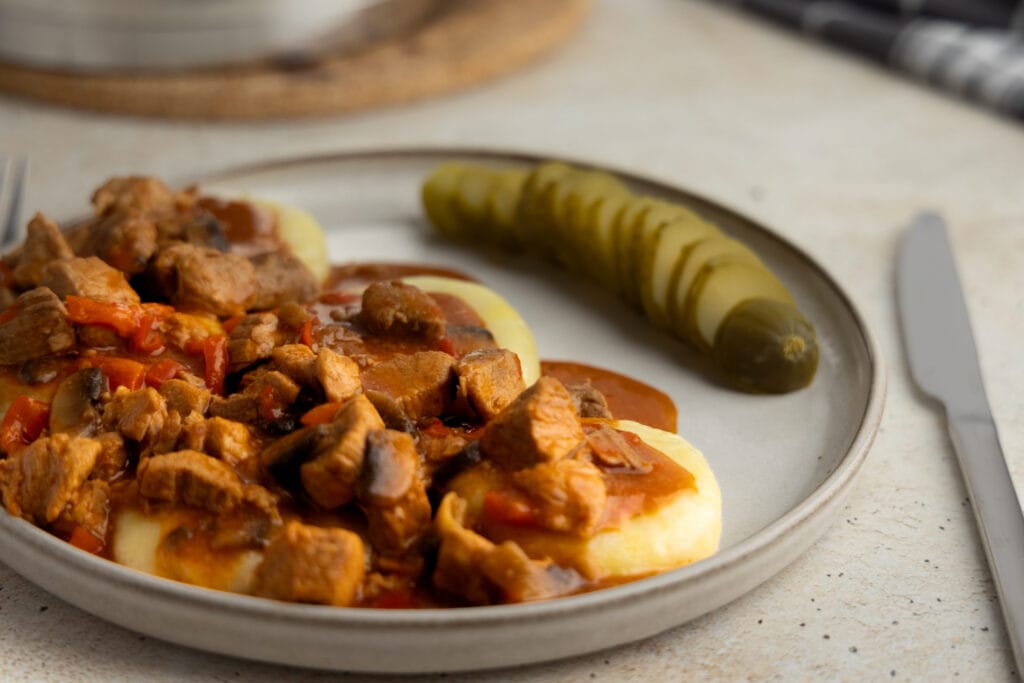
How to Reheat
Here’s how to reheat goulash:
On the Stove:
- Use a Saucepan: Scoop the goulash into a saucepan and place it over medium heat.
- Add a Splash of Water or Broth: If the goulash seems a bit thick, add some water or broth to help it regain the right consistency.
- Stir Occasionally: Stir the goulash occasionally to ensure even heating and to prevent sticking to the bottom of the pan.
- Heat Thoroughly: Bring the goulash to a rolling boil before removing it from the heat. This ensures that everything is heated through and safe to eat.
In the Microwave:
- Use a Microwave-Safe Dish: Transfer the goulash to a microwave-safe dish.
- Cover with a Lid or Microwave-Safe Plastic Wrap: This helps retain moisture and ensures even heating.
- Reheat in Intervals: Set your microwave to a medium power setting and heat in 30- to 60-second intervals, stirring between each to distribute the heat evenly. Add a bit of water if needed.
- Check the Temperature: Ensure the goulash is heated thoroughly before serving.
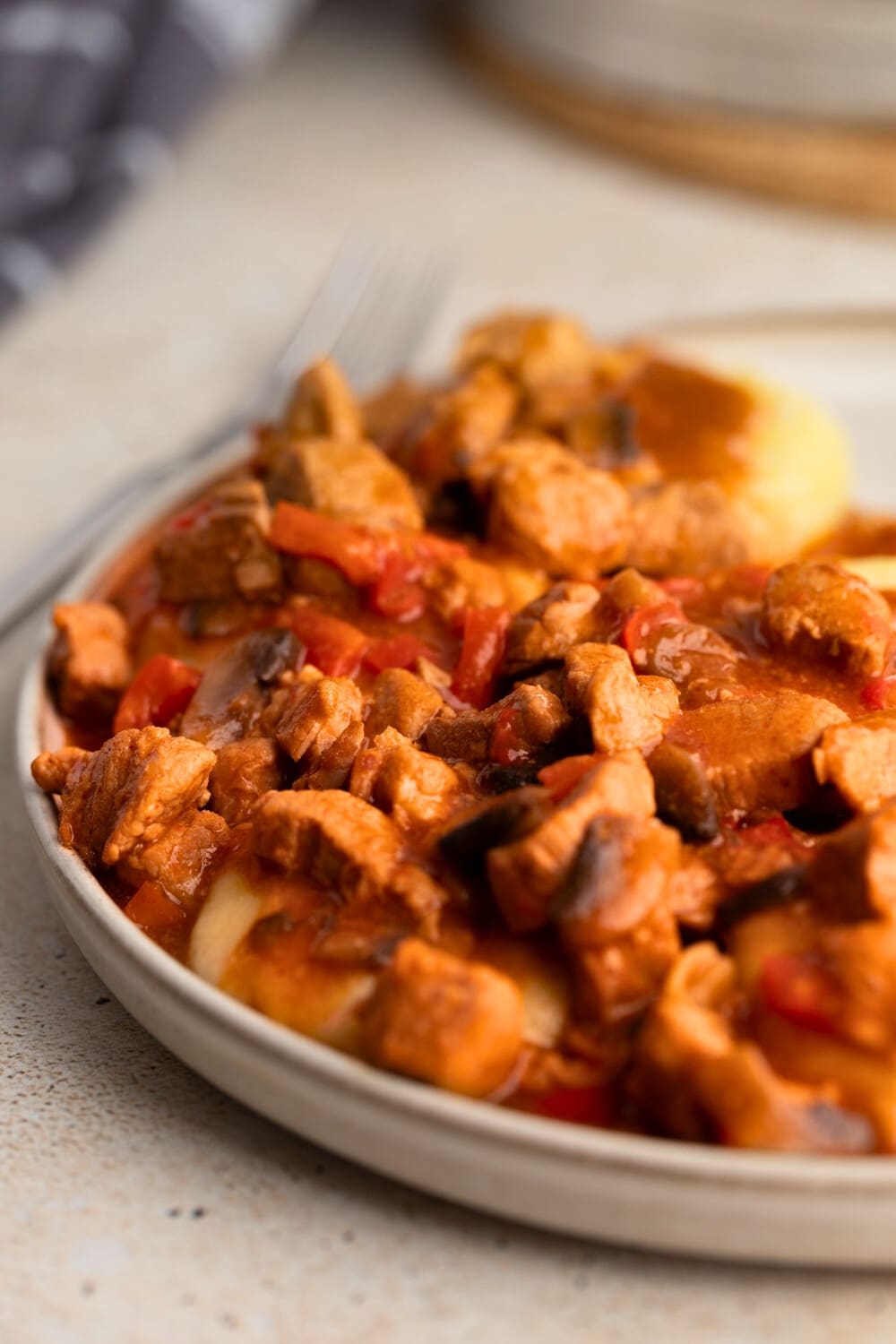
Ingredients
- 2 pounds pork shoulder or ~900g
- 8 oz button mushrooms or ~230g
- 1 bell pepper large
- 1 onion large
- 2-4 cloves of garlic small
- 1 bay leaf
- 3 allspice berries
- 2 teaspoons sweet paprika
- 1 teaspoon tomato paste
- Salt
- Cooking oil
- Water or broth as needed
- Potato starch or corn starch for thickening
- 2 tablespoons flour for coating the meat
Instructions
- Mushroom Prep: Clean and slice mushrooms.
- Mushroom Cooking: Sauté mushrooms in oil until their water evaporates; set aside.8 oz button mushrooms, Cooking oil
- Meat Prep: Cube pork shoulder, trimming excess fat.
- (Optional) Meat Coating: Coat pork cubes with flour for better browning.2 pounds pork shoulder, 2 tablespoons flour
- Meat Cooking: Brown pork in the same pan; remove if water is released.
- Pot Preparation: Add browned pork to a pot, cover with hot water or broth, add salt if needed, and bring to a boil.Water or broth
- (Optional) Skimming: Skim off foam or impurities from the boiling water.
- Onion Prep: Fry diced onion until golden; add to the pot.1 onion
- Adding Spices: Add allspice berries, bay leaf, garlic, and fried mushrooms to the pot.2-4 cloves of garlic, 1 bay leaf, 3 allspice berries
- Bell Pepper Addition: Add diced bell pepper to the pot.1 bell pepper
- Paprika and Tomato Paste: Once boiling, add sweet paprika and tomato paste.2 teaspoons sweet paprika, 1 teaspoon tomato paste
- Simmering: Cover and simmer for 1 to 1.5 hours, stirring occasionally.
- Seasoning Check: Adjust salt and tomato paste after 1 hour; continue cooking until meat is tender.Salt
- Consistency Adjustment: Thicken sauce if needed with a starch slurry.Potato starch or corn starch
- Final Prep: Remove allspice berries and bay leaves before serving.


